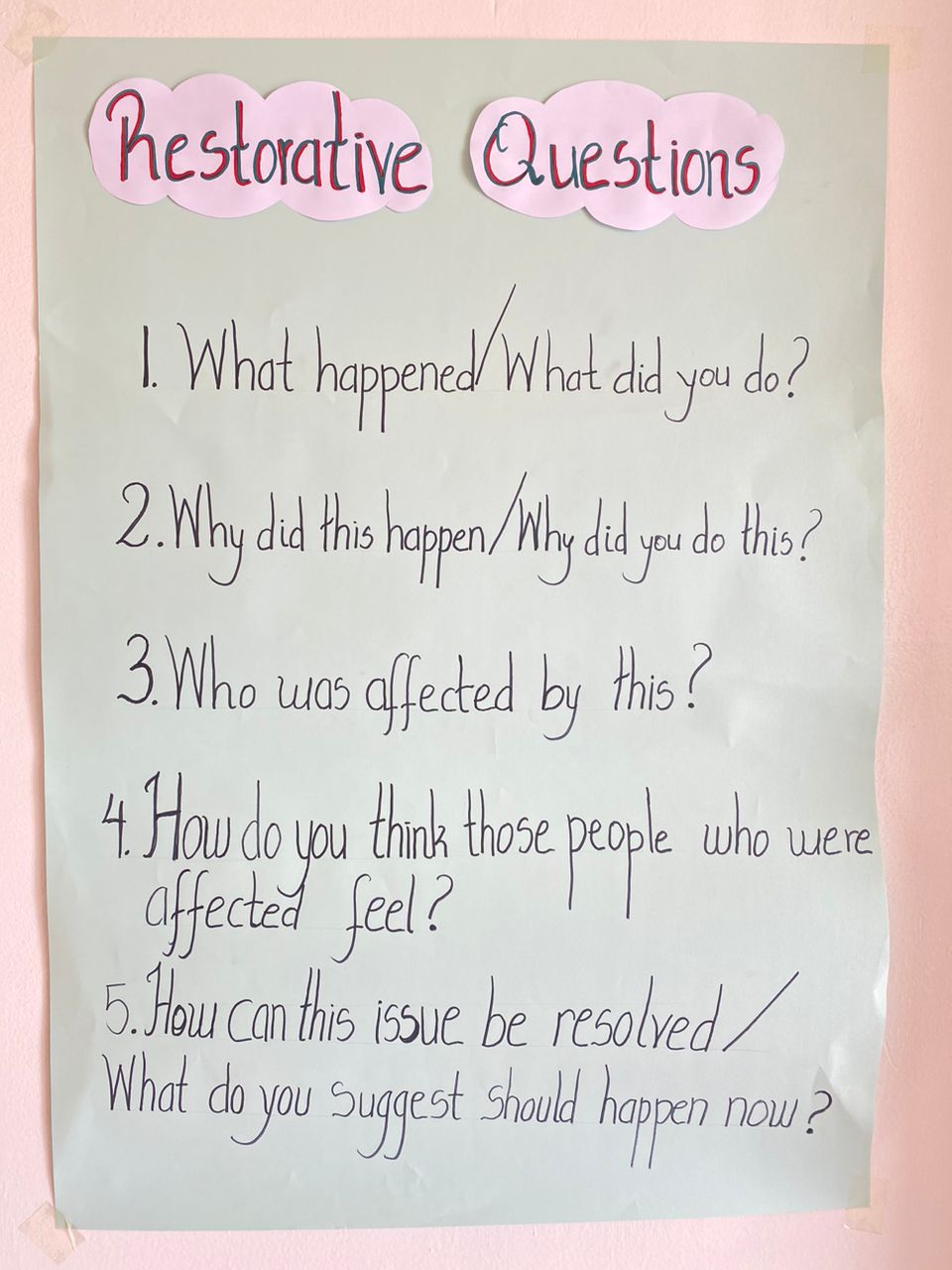UNIT 3: What are Restorative Approaches to Conflict Resolution?
UNIT 3: Behaviour Management - Active Citizenship, School and Parent Engagement
 With your learners you should aim as often as possible to use Restorative Approaches to Conflict Resolution to help them to learn how to make good behaviour choices for themselves. Using these approaches, as one strategy for positive behaviour management, will help to raise levels of personal responsibility in learners (and teachers) and this will lead to more successful self-management and relationships with others which are necessary for active citizenship.
With your learners you should aim as often as possible to use Restorative Approaches to Conflict Resolution to help them to learn how to make good behaviour choices for themselves. Using these approaches, as one strategy for positive behaviour management, will help to raise levels of personal responsibility in learners (and teachers) and this will lead to more successful self-management and relationships with others which are necessary for active citizenship.
Restorative approaches such as holding Restorative Conversations and Restorative Meetings enable teachers and parents/carers to focus upon building positive relationships that create and inspire harmonious and peaceful schools and communities. Adopting a Restorative Approach to Conflict Resolution in your school will have a positive effect on the home and the wider community too as learners will take these practices home with them.
What do we mean by Restorative Approaches in school?
The Restorative Approach to Conflict Resolution consists of holding a meeting in which you ask FIVE KEY QUESTIONS to get all of the learners who were involved in conflict/disagreements/arguments to think about what happened, why it happened, who was affected by it and how to resolve it so that everyone feels as if they have been treated fairly. The five questions are asked in the same order over and over again, in every restorative meeting and conversation, by all teachers, school leaders and even learners themselves when they learn how to hold restorative conversations with their classmates. These five questions make those involved in the conflict think deeply and take responsibility for their actions and reactions. In this way, all of those involved are listened to, included and involved in deciding on how to resolve the conflict.
The five key questions are:
- What happened/what did you do?
- Why did this happen/why did you do this?
- Who was affected by this?
- How do you think those people who were affected feel?
- How can this issue be resolved/what do you suggest should happen now?
You, the teacher, should learn these questions and practise using them. Then you can introduce them to your learners and teach them how to use these questions to lead their own restorative meetings. It is a great idea to make a Restorative Approaches Chart to display on your classroom wall, with the five questions. This will provide a visual reminder to you and your learners so that when a restorative meeting is needed, everyone can easily work through the questions. If everyone in the school knows the five questions and how to hold a restorative meeting or conversation the learners will learn to take responsibility for their own actions and behaviour and to have empathy for others. These are essential life skills for active citizenship.
